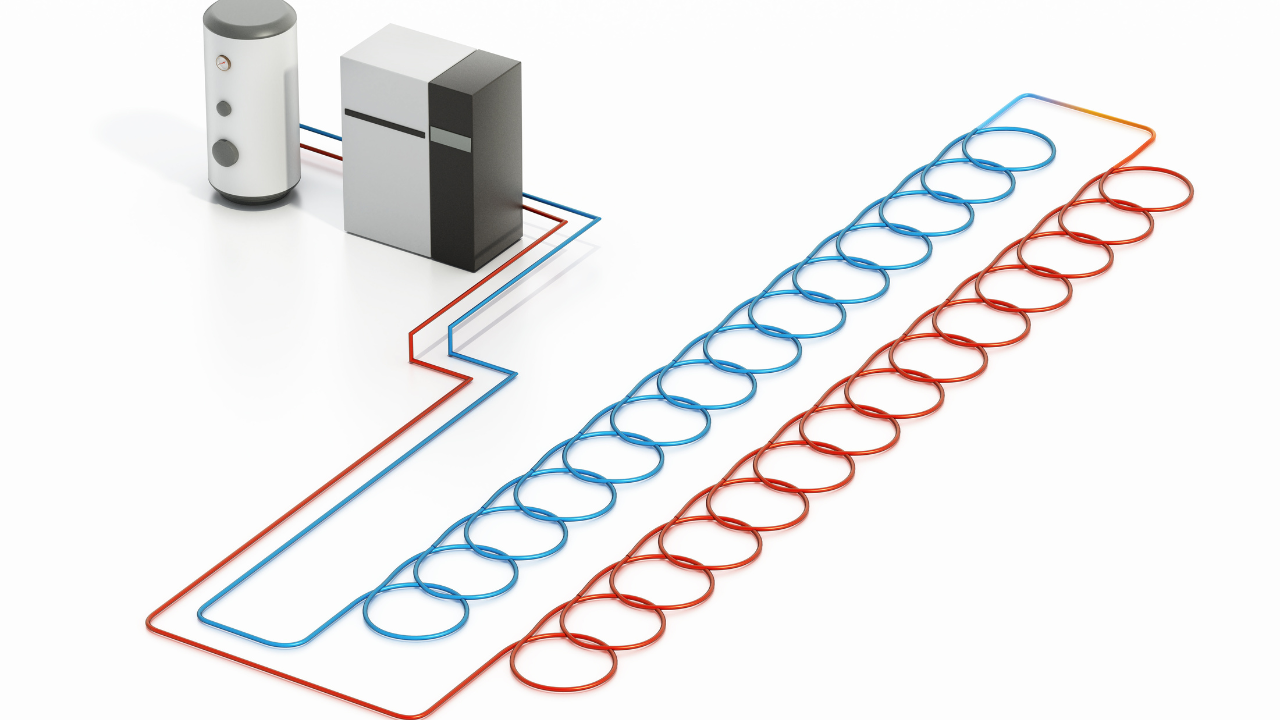
After the condensing gas boiler, Ground heat pumps have become an innovative heating and cooling technology in a world battling climate change and the need for sustainable energy solutions. These cutting-edge technologies provide a practical and economical approach to capturing the planet’s natural heat, ensuring cosy indoor temperatures while drastically lowering carbon emissions. This article examines ground heat pumps’ efficiency and how they function, illuminating their enormous potential for eco-friendly heating.
Harnessing the Earth’s Thermal Energy:
To transmit heat energy into or out of a building, ground heat pumps, sometimes called geothermal heat pumps or ground source heat pumps, take advantage of the Earth’s constant temperature under the surface. The ground loop, a system of underground pipes that circulates a heat transfer fluid, is used to access this renewable energy source. Ground heat pumps may heat or cool a building using little energy because they take advantage of the Earth’s thermal mass.
Efficiency in Operation:
Because of their high efficiency, heat pumps are praised as efficient heating options. They also use less energy than traditional heating systems because they don’t use fossil fuels to create heat; instead, they only transfer it from one place to another. A refrigeration cycle, like the ones in refrigerators and air conditioners, helps this process.
The Ground Heat Pump Cycle:
Ground Loop: The ground loop comprises underground high-density polyethene pipes deployed vertically in boreholes or horizontally in trenches. Throughout the system, a heat transfer fluid, such as a solution of water and antifreeze, circulates through these pipes.
Heat Exchange:
When in heating mode, the ground loop takes heat from the Earth, where temperatures are constant all year. This thermal energy is captured by the heat transfer fluid, which then transfers it back to the heat pump.
Compression:
The heat pump compresses the heat that has been trapped, increasing its temperature even more. As a result, the heat energy is amplified and can be used for domestic water heating or space heating.
Distribution:
The heated fluid is subsequently circulated throughout the building using a distribution system, which may include forced air systems, radiators or underfloor heating.
Reversing Valve (Cooling Mode)
Ground heat pumps can also be used in reverse for cooling during the warmer months. To efficiently cool the building, the refrigeration cycle is reversed, removing heat from the inside area and transferring it into the ground via the ground loop.
Advantages of Ground Heat Pumps
Energy Efficiency:
With high energy efficiency ratios (EER) and coefficient of performance (COP) values, heat pumps can produce more heating or cooling for every unit of electrical energy used.
Environmental Benefits:
Ground heat pumps are an environmentally friendly heating alternative since they significantly lower greenhouse gas emissions and reliance on fossil fuels by using renewable energy from the Earth.
Cost Savings:
Although heat pumps in the ground may cost more to install initially than conventional heating systems, the energy savings over time can result in significant cost savings over the long run.
Versatility:
Whether for residential, commercial, or industrial buildings, ground heat pumps can be modified to match both new construction and retrofit projects.
Durability and Low Maintenance:
Compared to combustion-based systems, heat pumps have fewer mechanical parts, which means less frequent maintenance is needed, and the system’s lifespan is extended.
Final Thoughts
Regarding how we think about heating and cooling systems, heat pumps constitute a paradigm change. They offer a practical method for achieving pleasant indoor temperatures while reducing environmental impact because of their capacity to harness the Earth’s thermal energy efficiently.
See some more of my home-related posts here
